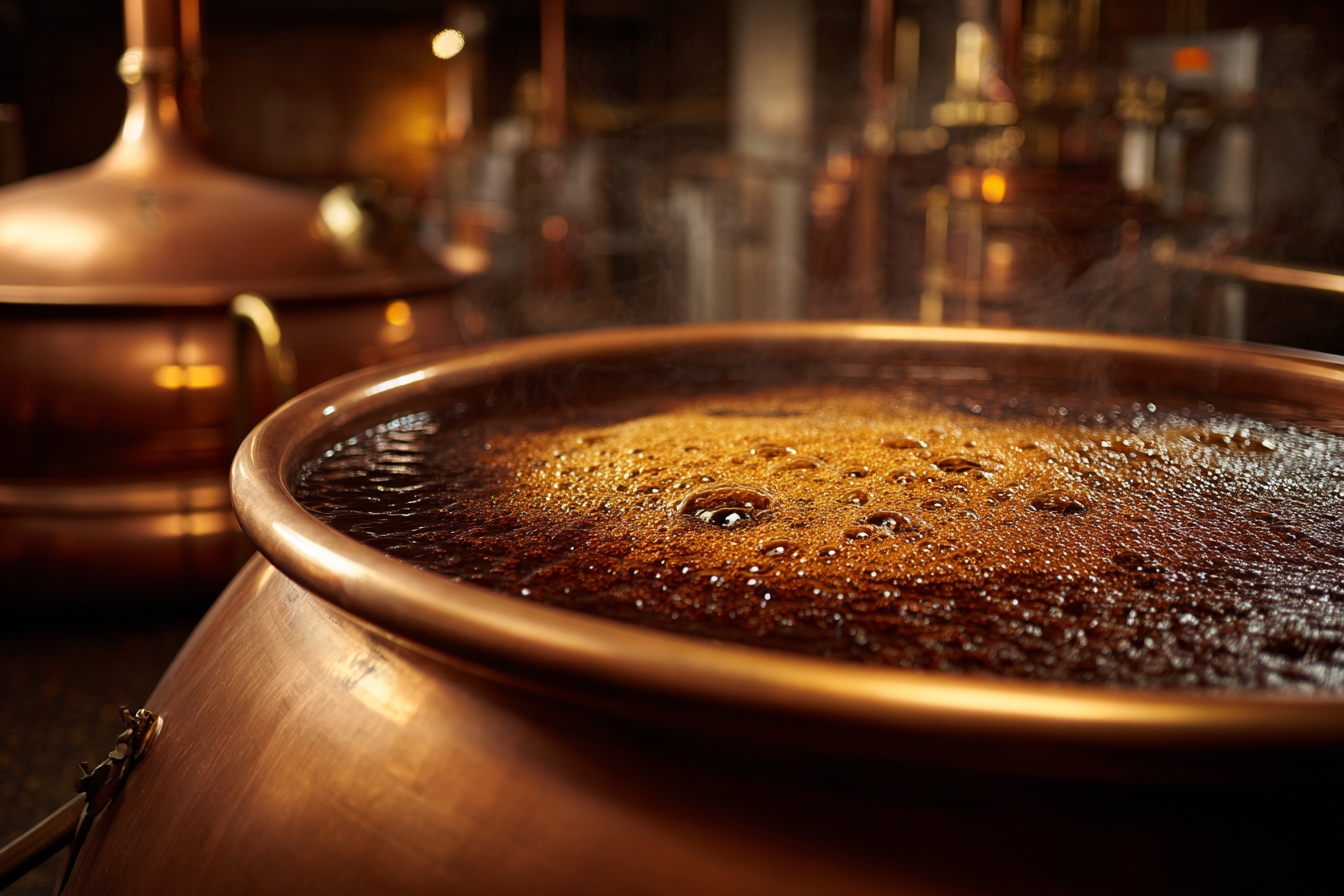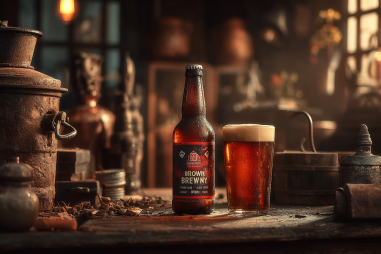When you think of Irish beer, the Irish Extra Stout immediately comes to mind. Renowned for its deep color, robust flavor, and rich creamy head, this style of stout is steeped in history and tradition. But have you ever wondered what makes Irish Extra Stout so unique? From selecting the perfect grains to the careful fermentation, each stage of the Irish Extra Stout brewing process contributes to its distinctive character. Let’s dive deep into the steps that transform simple ingredients into this iconic brew.
Introduction to Irish Extra Stout
The Irish Extra Stout is a full-bodied dark beer, often characterized by its roasted malt flavors, subtle bitterness, and smooth, velvety mouthfeel. Originating in Ireland in the 18th century, this style has grown tremendously popular around the world, with Guinness being the most famous representative. Unlike other stouts, the Extra Stout variation stands out for its slightly higher alcohol content and more pronounced roasted flavors, giving it a bolder taste that lingers on the palate.
The brewing process has evolved over the years, combining time-honored traditional techniques with modern brewing science to ensure consistent quality. Understanding these steps can not only deepen your appreciation when enjoying a pint but also shed light on the craftsmanship behind each bottle or glass.
Key Ingredients in Irish Extra Stout
The essence of any beer starts with its ingredients, and Irish Extra Stout is no exception. While the recipe may vary slightly among brewers, the core components generally include:
- Malted Barley: The backbone of the stout, providing fermentable sugars and much of the flavor profile.
- Roasted Barley: Unmalted barley that has been roasted to deep black, contributing to the intense dark color and characteristic bitterness.
- Hops: Used sparingly to balance the sweetness from the malt with a mild bitterness.
- Water: The quality and mineral content of water can affect the final taste significantly.
- Yeast: Essential for fermentation, it converts sugars into alcohol and adds subtle flavor nuances.
The careful selection and proportion of these ingredients are crucial to capturing the rich, roasted aroma and smooth finish typical to Irish Extra Stout.
Malting and Roasting Processes
Malting is the first critical step that prepares barley for brewing. The barley grains are soaked in water to start germination and then dried in kilns. During this process, enzymes develop that will later convert starches into fermentable sugars. For the Irish Extra Stout, the malt is usually kilned to a medium roast level, producing a robust but not overpowering malt character.
What truly sets the stout’s color and flavor apart is the addition of roasted barley. Unlike malted barley, roasted barley is unmalted and roasted at high temperatures until blackened. This produces notes of coffee, chocolate, and a pleasant bitterness that forms the backbone of the stout’s signature taste.
Some brewers may also add specialty malts, like chocolate malt or black malt, to enhance complexity. The level and method of roasting are pivotal in defining the stout’s depth and richness.
Brewing Techniques Specific to Irish Extra Stout
Once the malts are prepared, the actual brewing begins by mashing the grains in hot water. This step activates enzymes that break down starches into sugars, resulting in a sweet liquid known as wort. The mash temperature is carefully controlled—usually in the mid-60s °C (around 150-155 °F)—to extract the desired balance of fermentable and non-fermentable sugars, which influence mouthfeel and sweetness.
For Irish Extra Stout, brewers often incorporate longer mash times to maximize flavor extraction from the roasted barley, while carefully avoiding excessive harshness. The wort is then separated from the spent grains in a process called lautering.
Next comes boiling the wort with hops. The hop varieties used tend to be traditional European types like East Kent Goldings or Fuggle, which provide a subtle bitterness without overpowering the malt flavors. Boiling also sterilizes the wort and concentrates it.
After the boil, the wort is quickly cooled to fermentation temperature and transferred to fermentation tanks.
Fermentation and Conditioning
Fermentation is where yeast works its magic, converting the wort’s sugars into alcohol and carbon dioxide. Irish Extra Stouts usually undergo fermentation with ale yeast strains, which tend to be top-fermenting and operate at warmer temperatures (around 18-22 °C or 64-72 °F). This yeast choice helps develop some of the fruity esters and subtle flavors that complement the roasted malt backbone.
The fermentation period can last from several days to a couple of weeks, depending on the brewery’s specifications. After fermentation, the stout is conditioned—sometimes in tanks, casks, or barrels—allowing flavors to mature and any harsh alcohol notes to mellow.
Some brewers also use nitrogen gas rather than just carbon dioxide in their dispensing, particularly for draught versions, which helps create the creamy texture and tight, lasting head the style is famous for.
Packaging and Serving
Once the stout has reached maturity, it is packaged for distribution. This can be in bottles, cans, kegs, or casks. To maintain freshness and stability, brewers may pasteurize the beer or use filtration, although many prefer minimal processing to preserve flavor complexity.
The serving style greatly impacts the overall experience of an Irish Extra Stout. Draught stout is commonly served with a ‘two-part pour’ and nitrogen gas to produce a dense, creamy head and a smooth mouthfeel. Bottled or canned stouts are typically carbonated with carbon dioxide and can be poured more vigorously to release aromas and create foam.
Serving temperature is usually on the cooler side (8-12 °C or 46-54 °F) to balance the beer’s body and aroma, allowing drinkers to savor the layered flavors.
Taste Profile Development During Brewing
The unique taste profile of Irish Extra Stout develops gradually through each stage of brewing. The malts impart sweet, caramel, and toasty notes, while the roasted barley adds coffee-like bitterness and depth. The hops contribute just enough bitterness to balance the malt sweetness without dominating the palate.
During fermentation, yeast brings additional layers—subtle fruity esters and a clean finish—that complement the dark malt flavors. Conditioning smoothes out the beer’s body, creating that velvety texture stouts are known for.
The result is a harmonious, complex beer that’s bold yet approachable, perfect for sipping slowly and appreciating every sip.
What Makes the Brewing Process Special
The magic of Irish Extra Stout lies not just in the ingredients but in the meticulous craftsmanship that takes place throughout its brewing. The balance of malts, the expert roasting of barley, the precise mashing temperatures, and the artful fermentation techniques all weave together to create a beer that’s rich, complex, and deeply satisfying.
Brewers honor centuries-old tradition while embracing modern advances, ensuring that each batch stays true to the distinctive character that defines Irish Extra Stout. Whether enjoyed in a cozy pub in Dublin or at home across the world, understanding this process enhances the appreciation of every glass.
Next time you raise a pint of Irish Extra Stout, take a moment to savor not only the flavors but also the heritage and care poured into each brew—from grain to glass.







